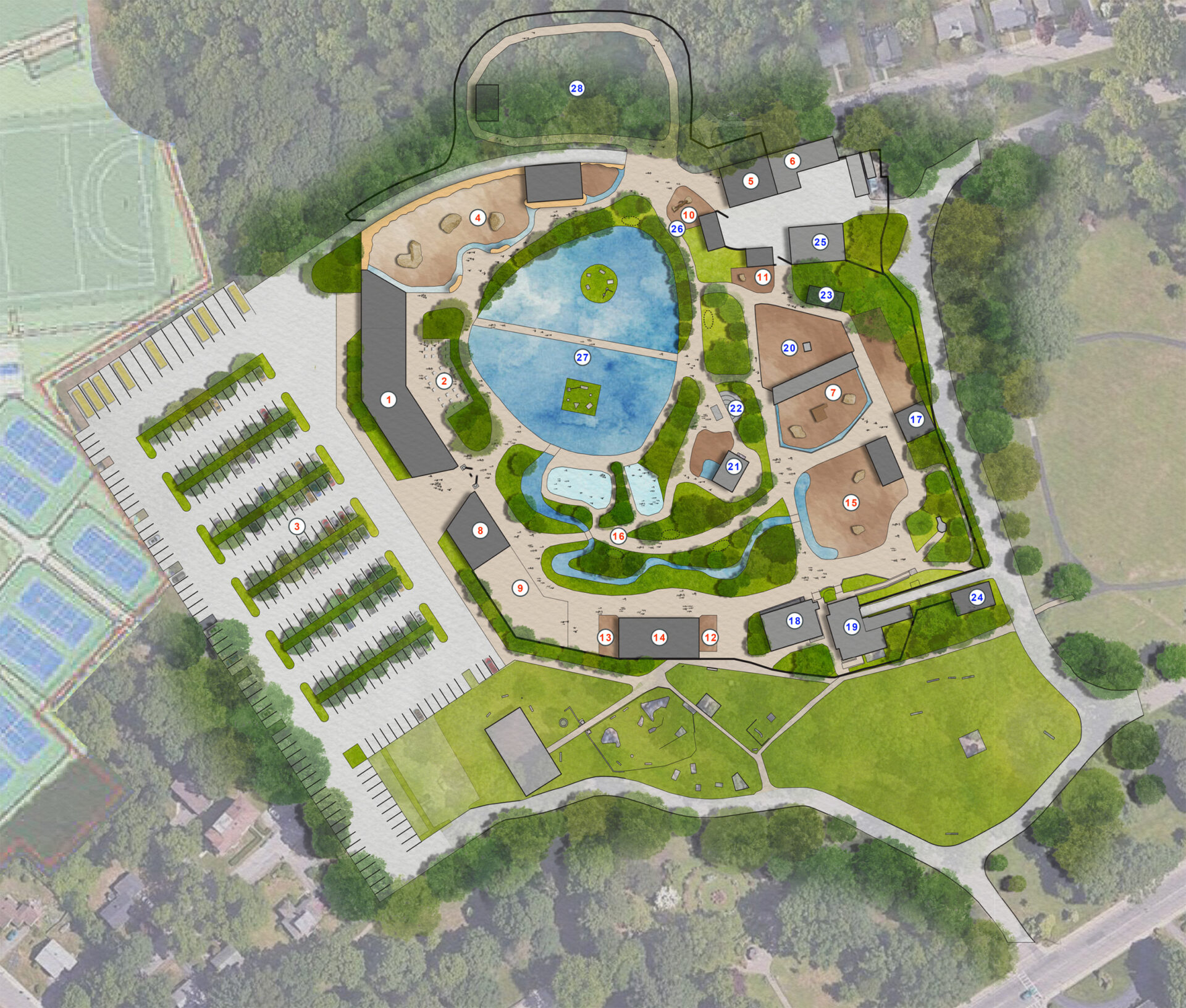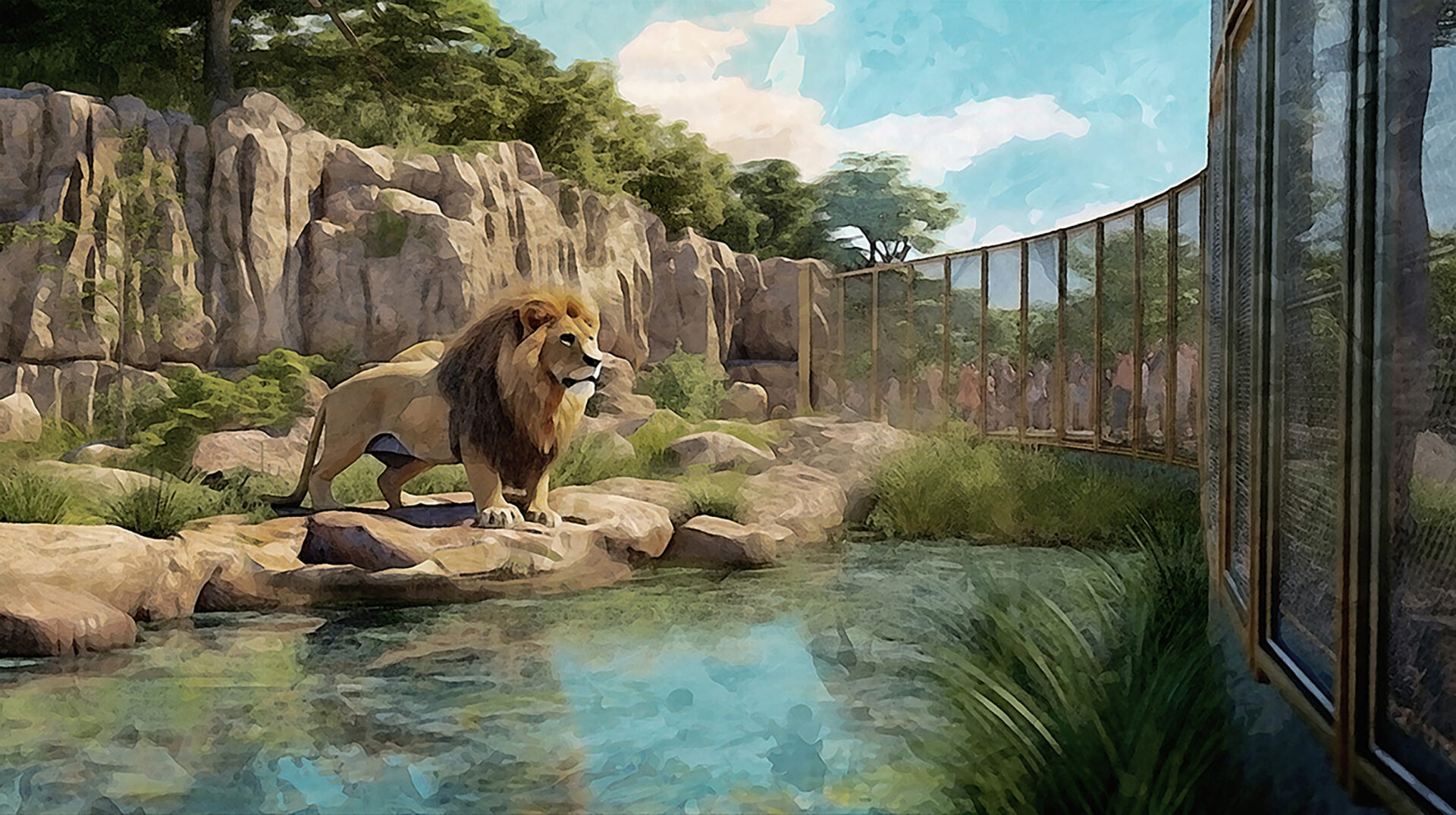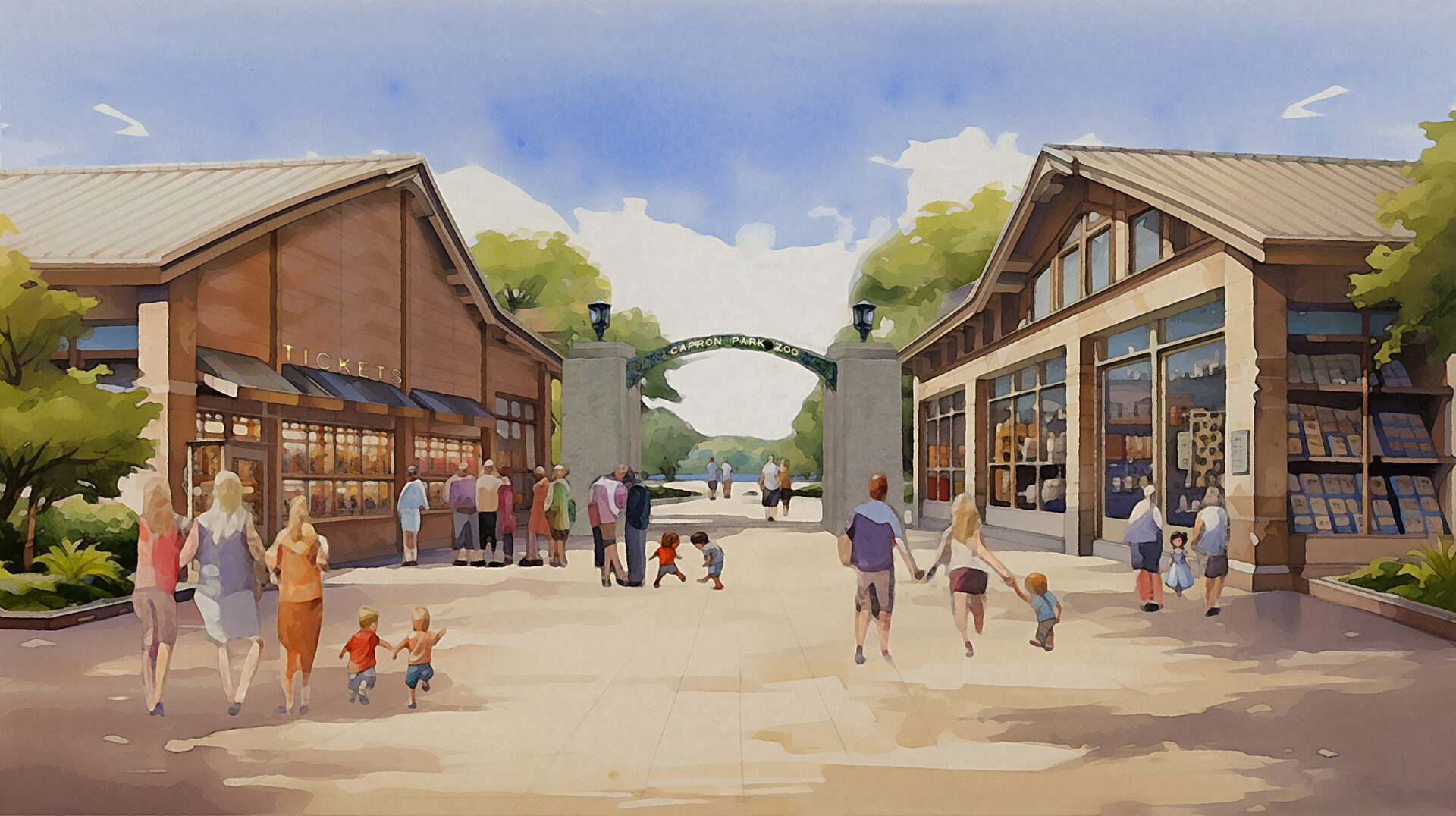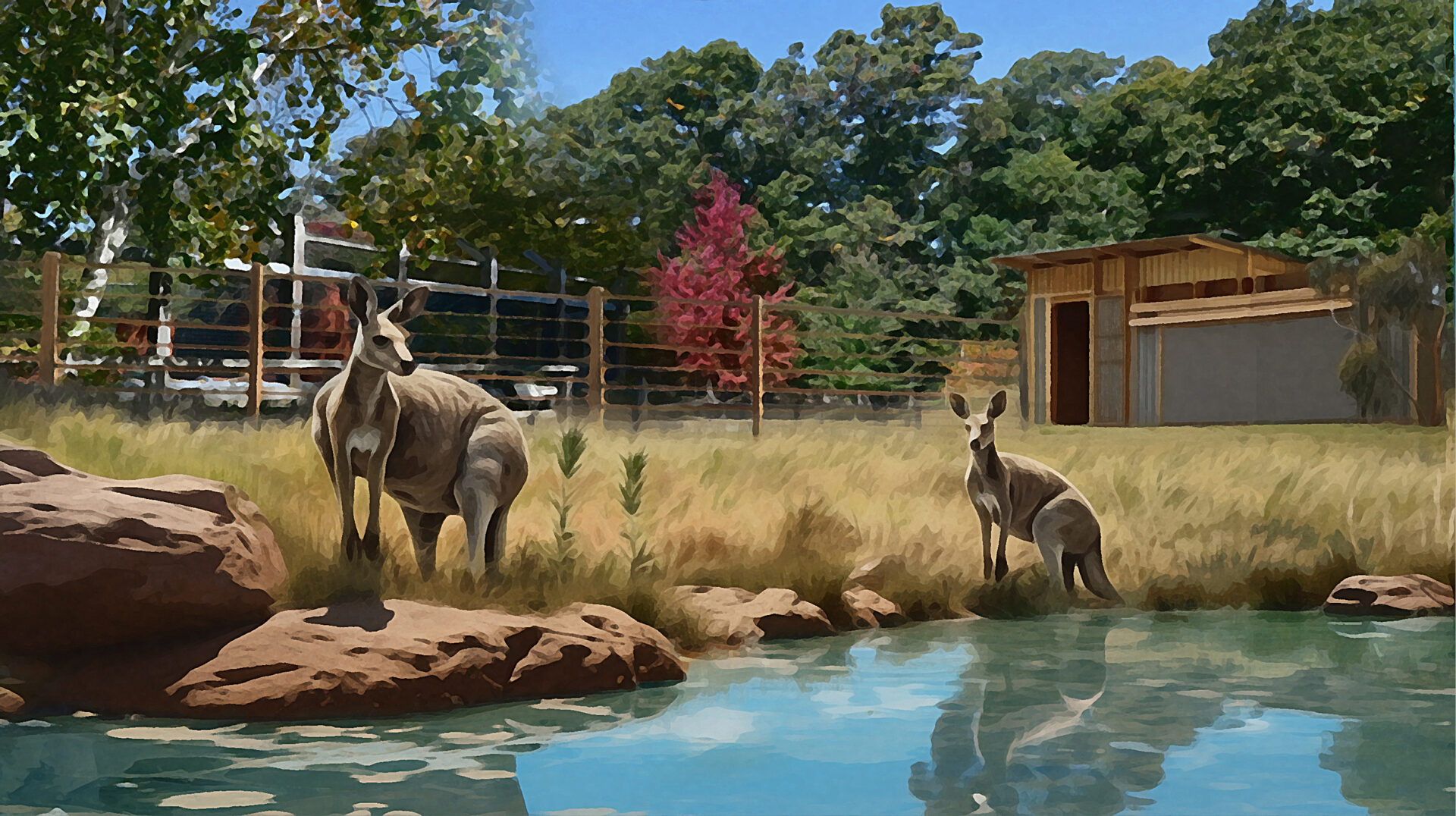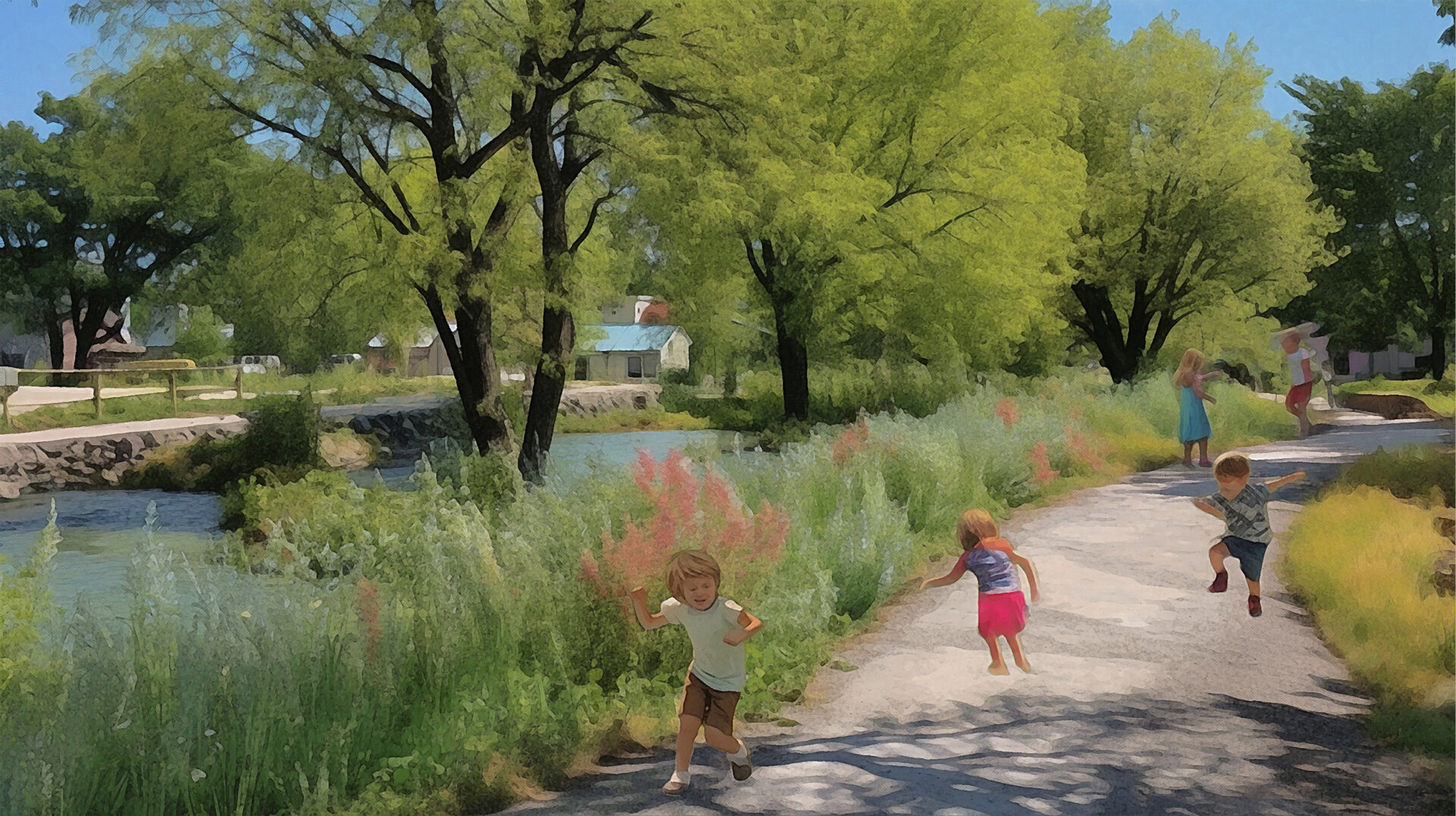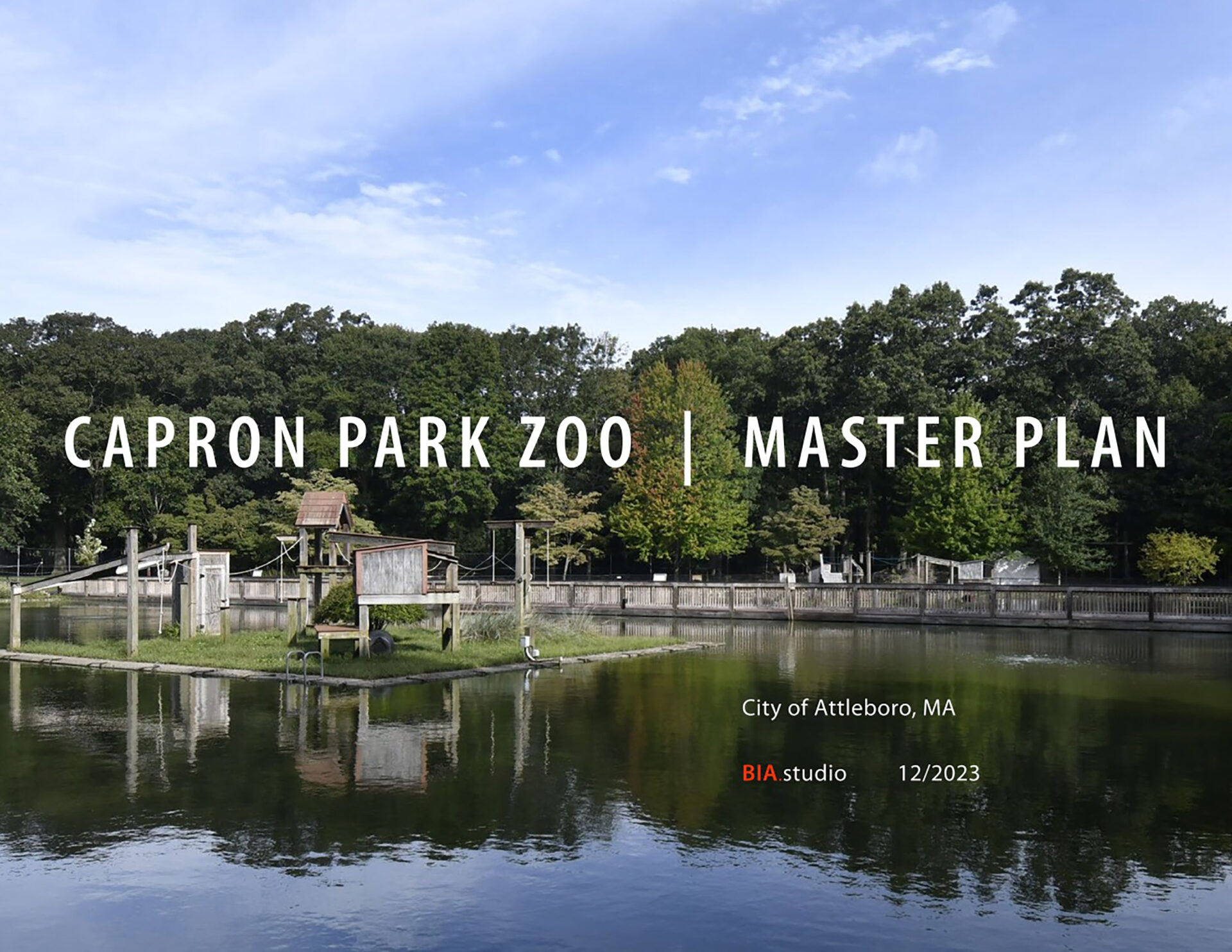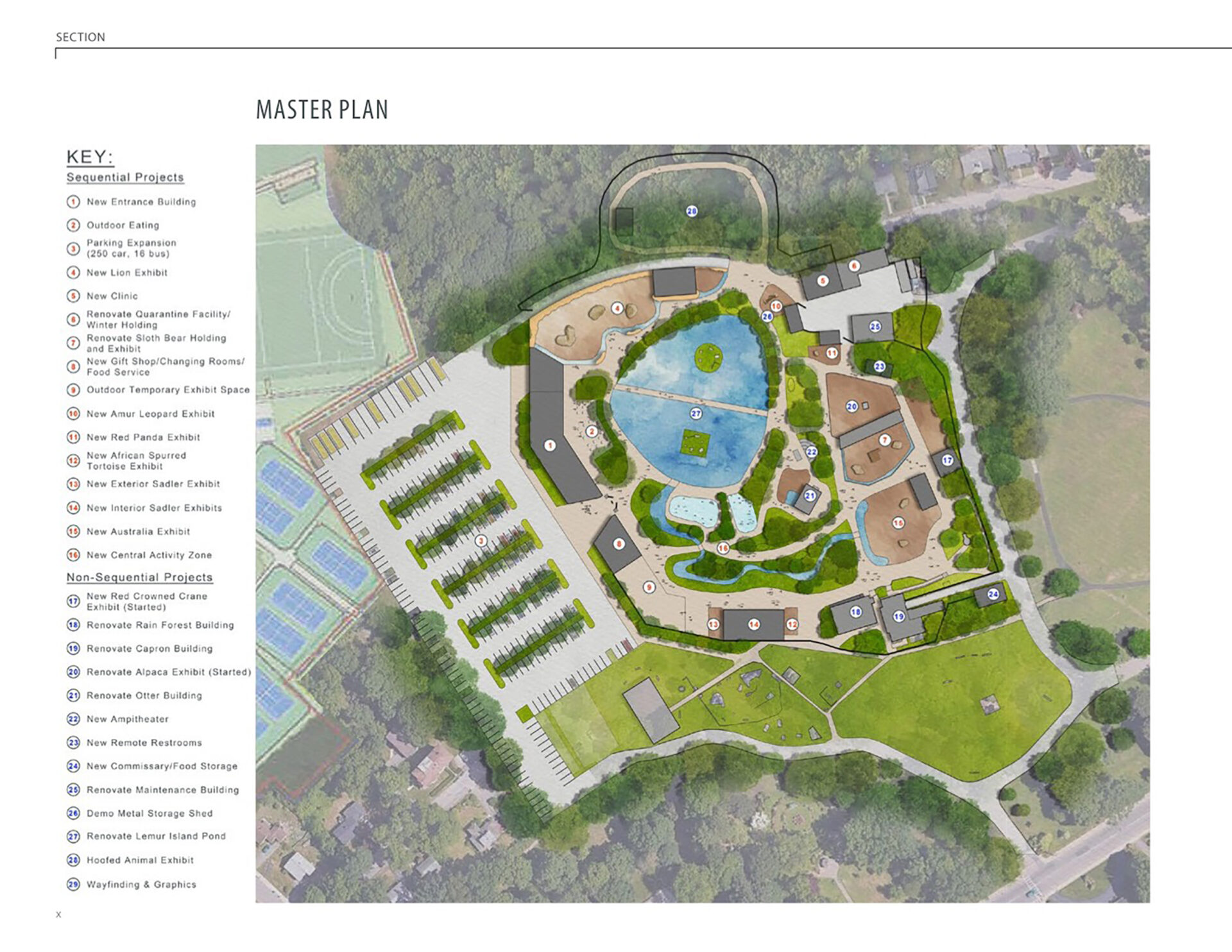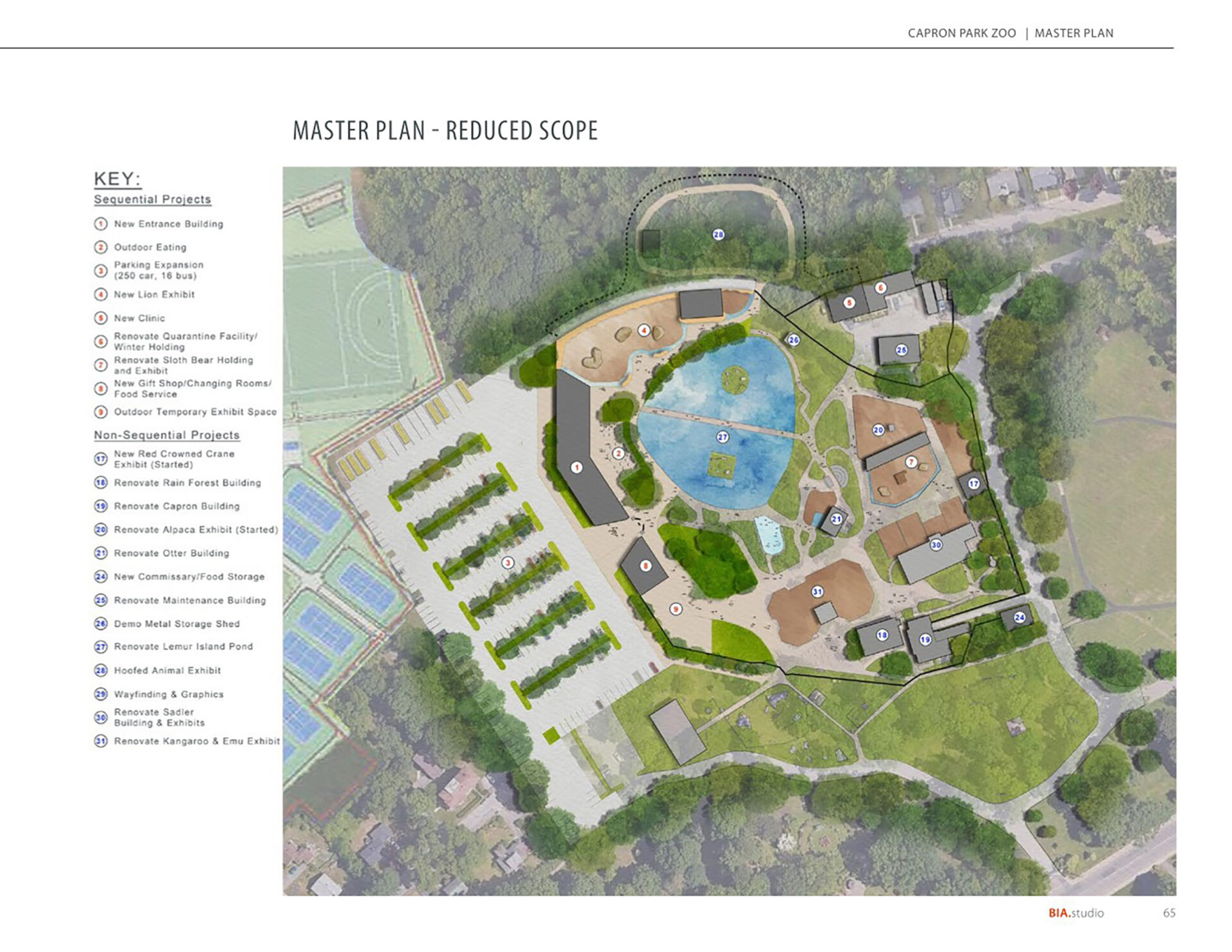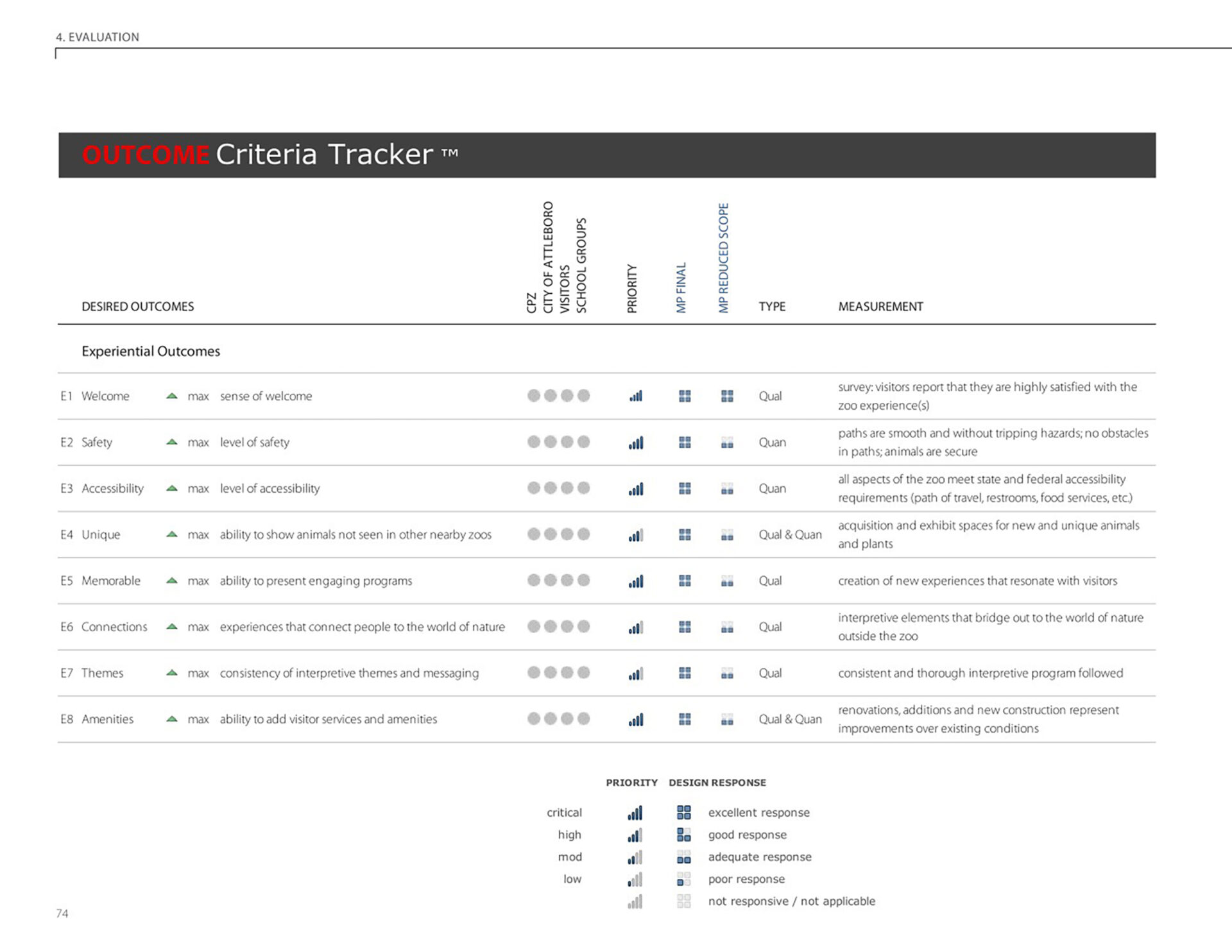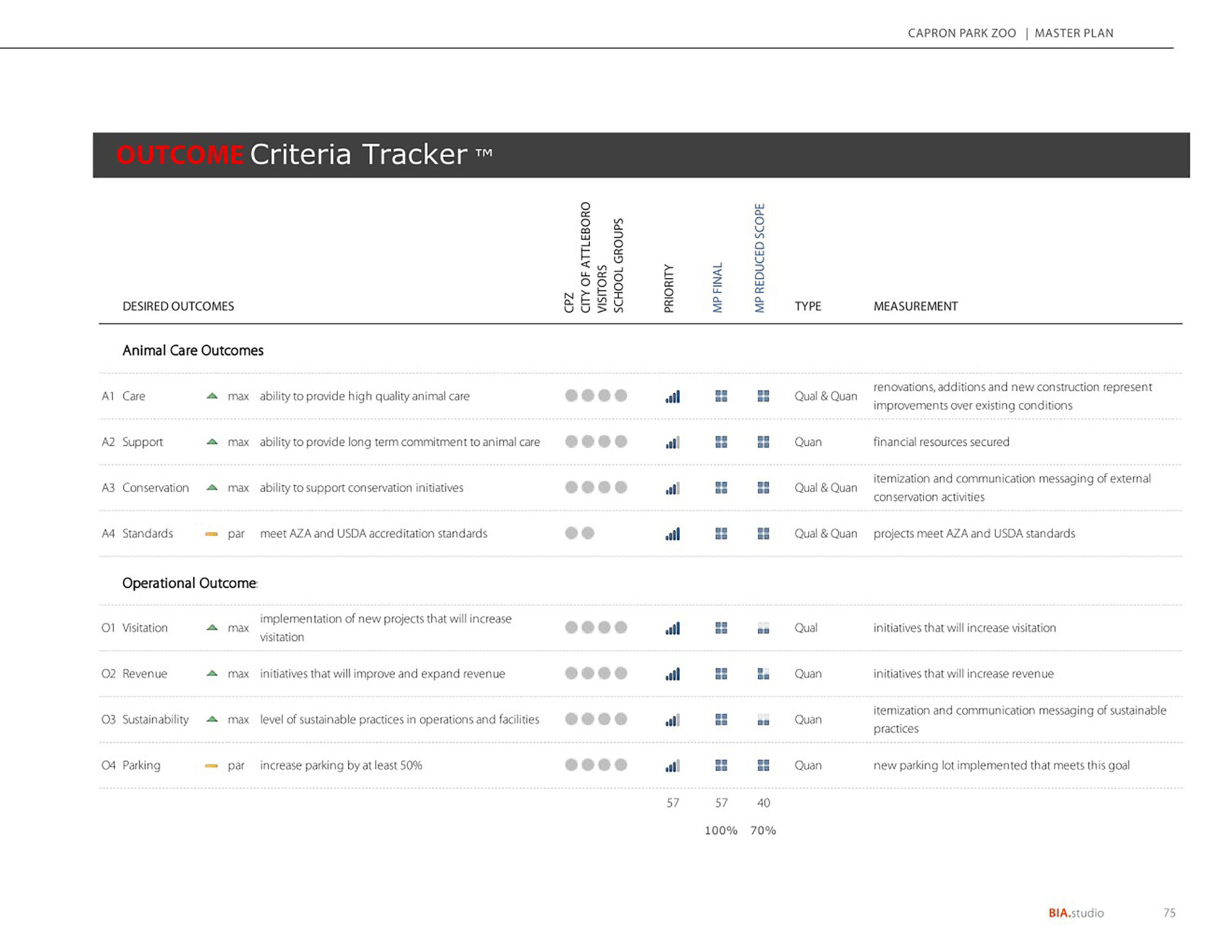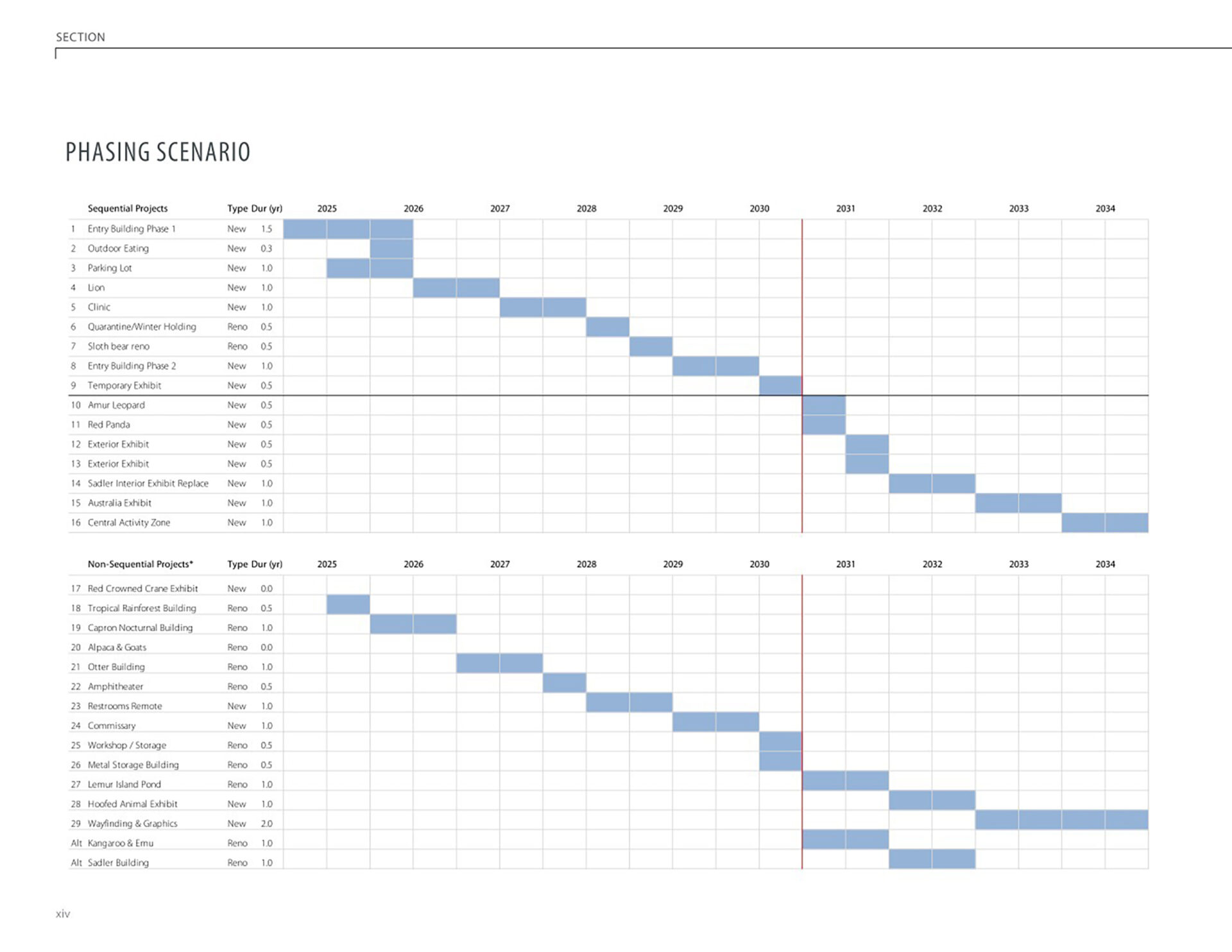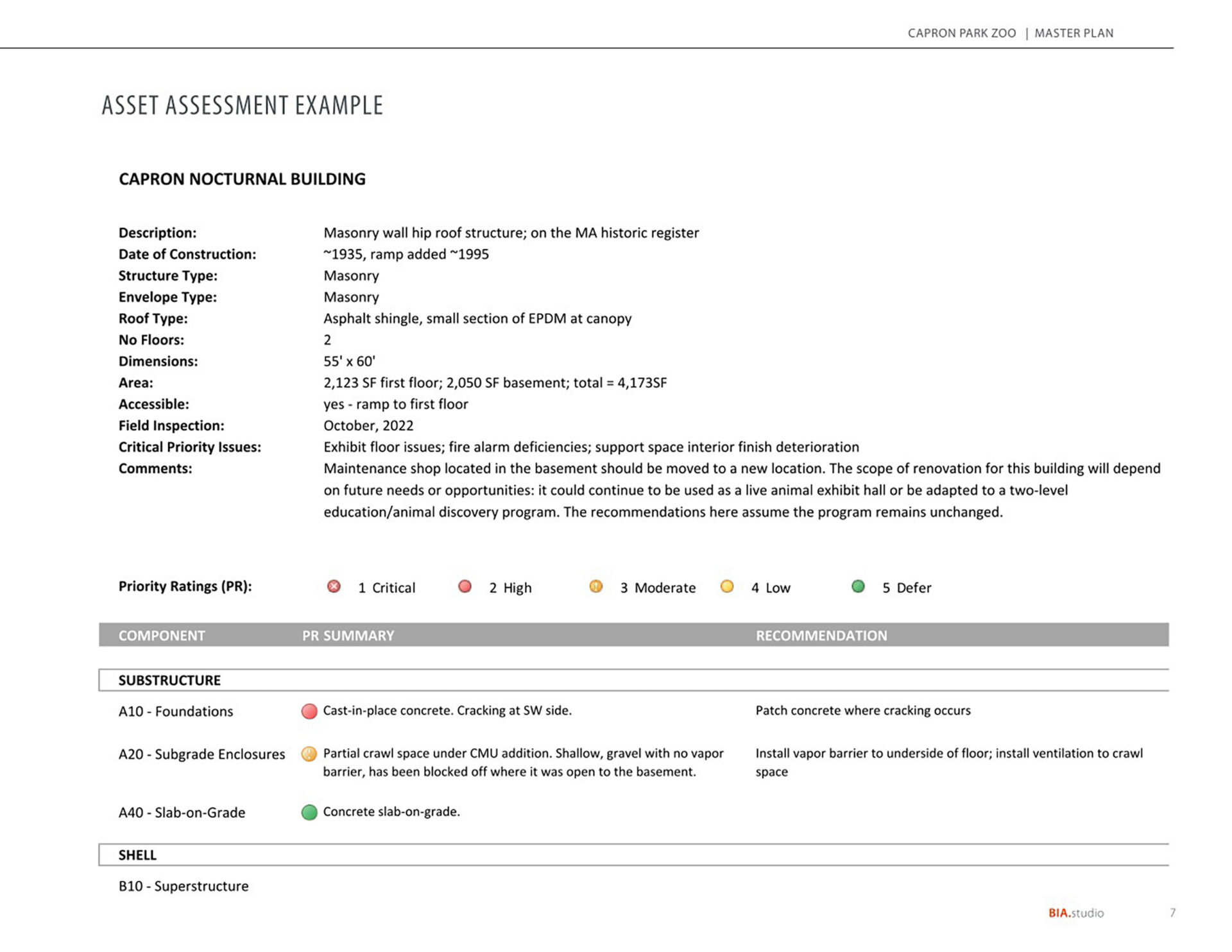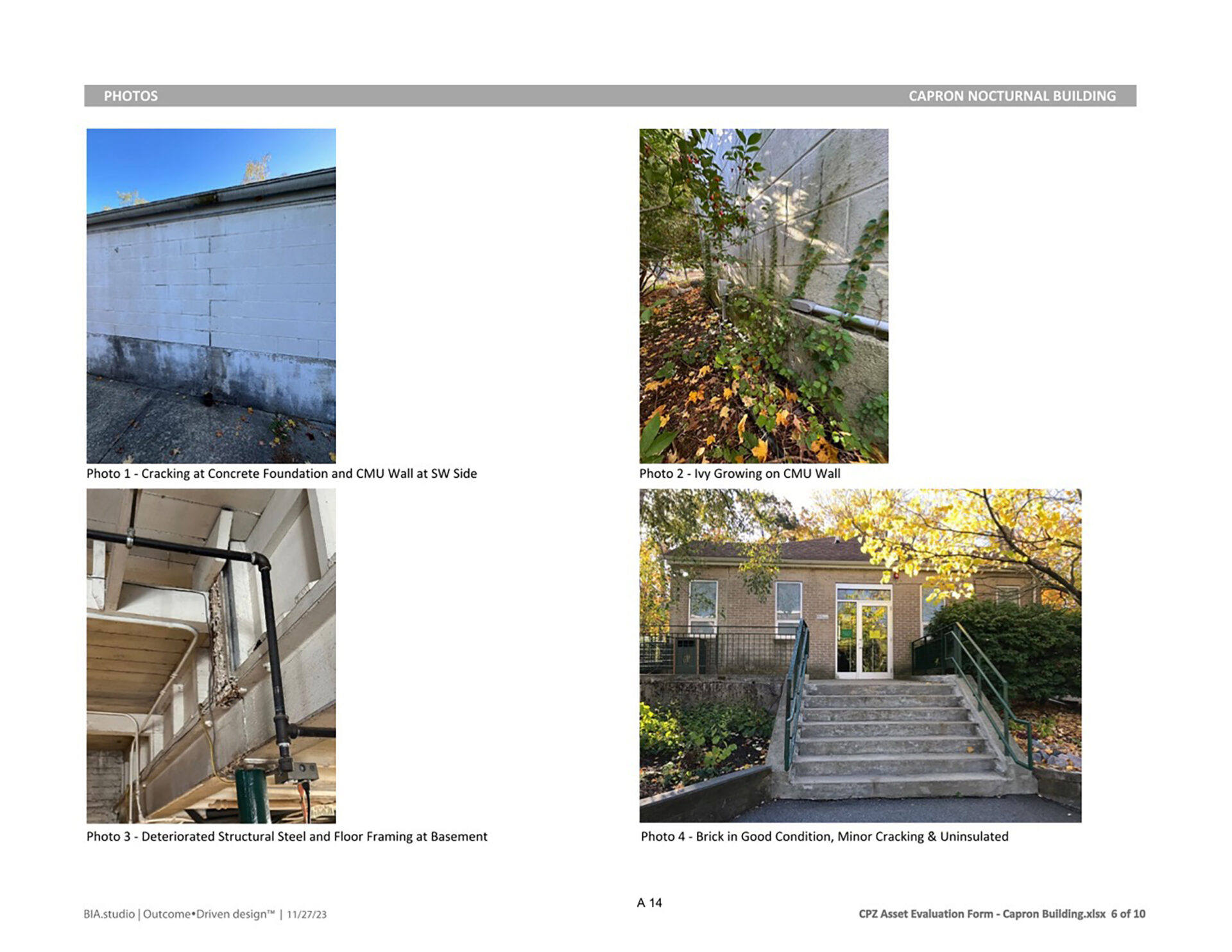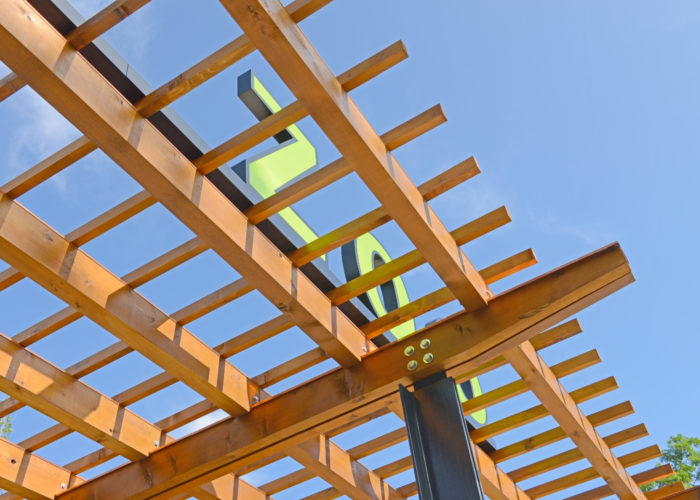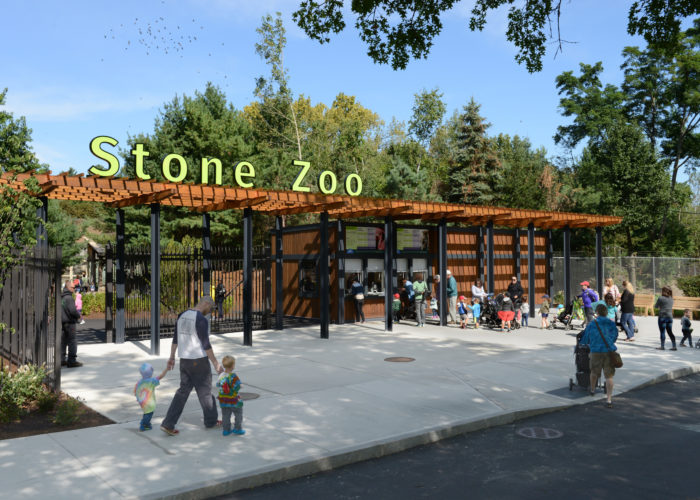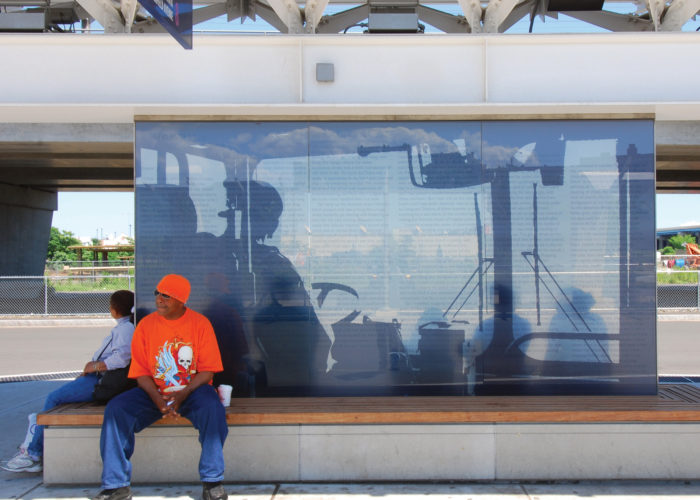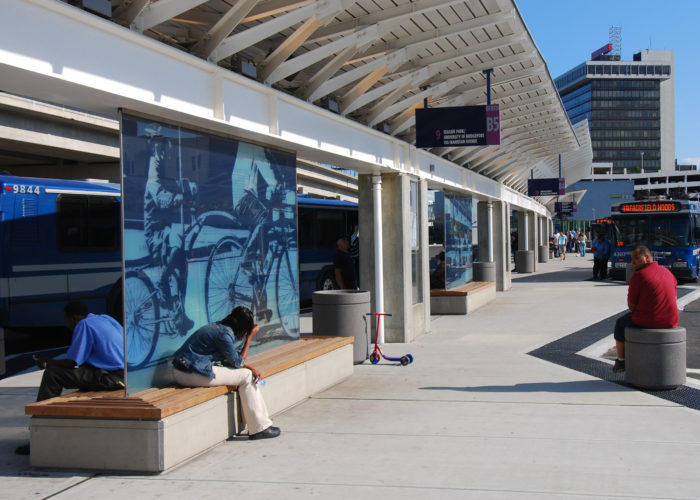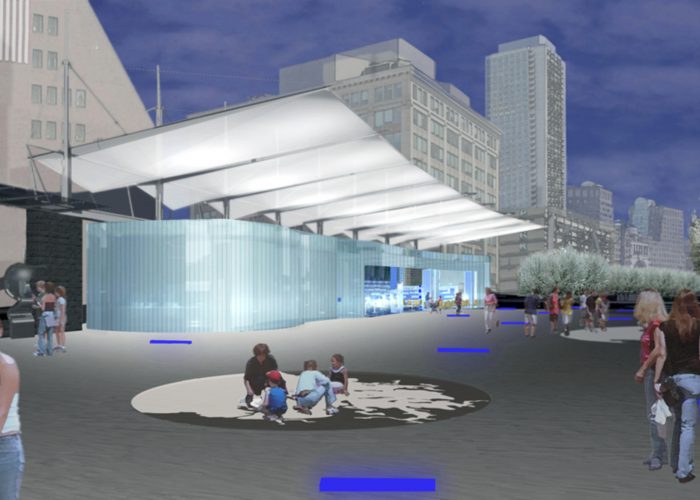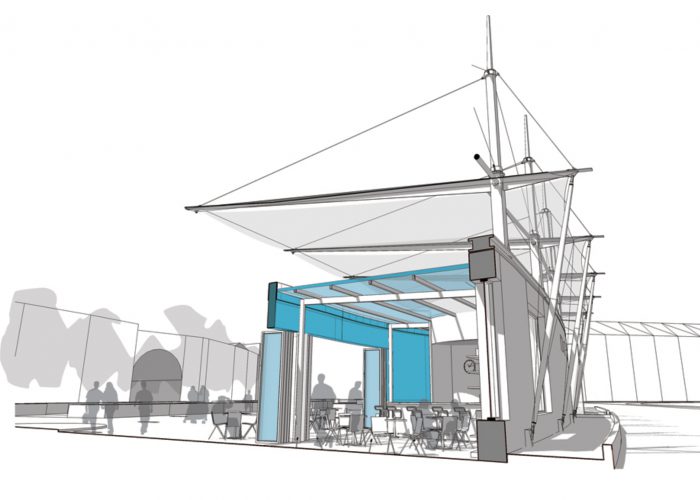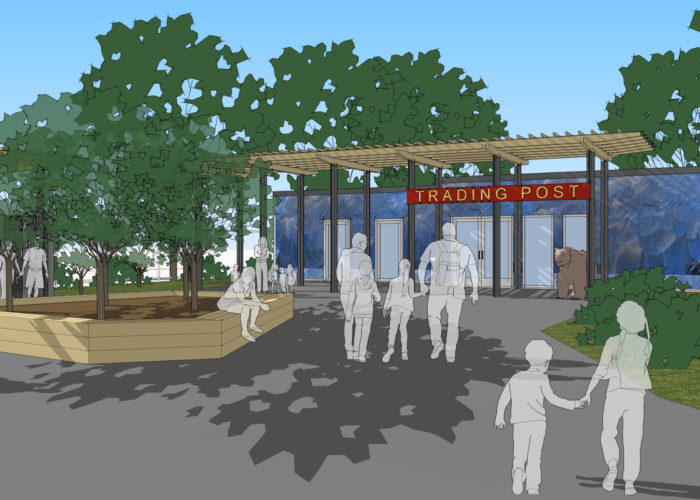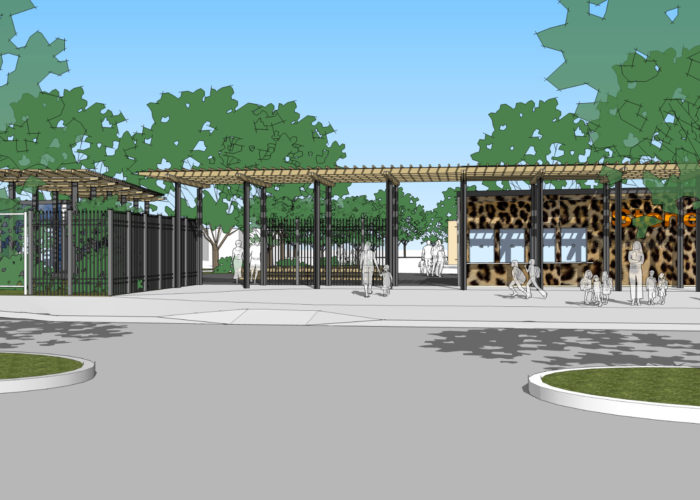Overview
The Comprehensive Master Plan for the Capron Park Zoo, located within the historic 62-acre Capron Park in Attleboro, MA, creates a clear and creative road map for the future with a framework of new elements and renovation projects to be undertaken over the next 10-15 years.
Process
BIA.studio conducted a survey of existing facilities at the Capron Park Zoo, encompassing 8 acres, 8 buildings, and 10 outdoor exhibits. BIA.studio and its engineering team conducted walkthroughs of the site and facilities, and documented existing conditions, recommendations and priority ratings in Asset Assessment reports. Using our Outcome-Drive design methodology, BIA.studio met with stakeholders and distilled the Zoo’s long list of criteria, goals and objectives into a consolidated list of the outcomes viewed by the Zoo as essential to success.
Master Plan
Based on the Asset Assessments and the criteria and priorities summarized in the Outcome Criteria Tracker, BIA.studio developed a conceptual framework of new facilities and renovation of existing assets. The full master plan envisions 16 sequential projects, where program elements are replaced with new facilities prior to removal or renovation of existing, and 13 non-sequential projects that can be undertaken at any time. A reduced master plan scope allows the Capron Park Zoo to undertake fewer new projects, reducing capital costs, while still serving as a roadmap for the future development of the zoo. In both versions a new entrance building and lion exhibit are the first and highest priority, replacing badly deteriorated facilities, and providing new amenities, with educational space, food service and event space, and an exciting new entrance exhibit. The new zoo site plan organizes all of the new and existing exhibits around a loop circuit visitor path, with a new central activity zone to complement the live animal experience with spaces that encourage play and discovery. All elements of the new master plan work to support the Zoo’s mission to “excite an interest in the natural world through education, conservation and recreation.”
